Downloaded 18 times

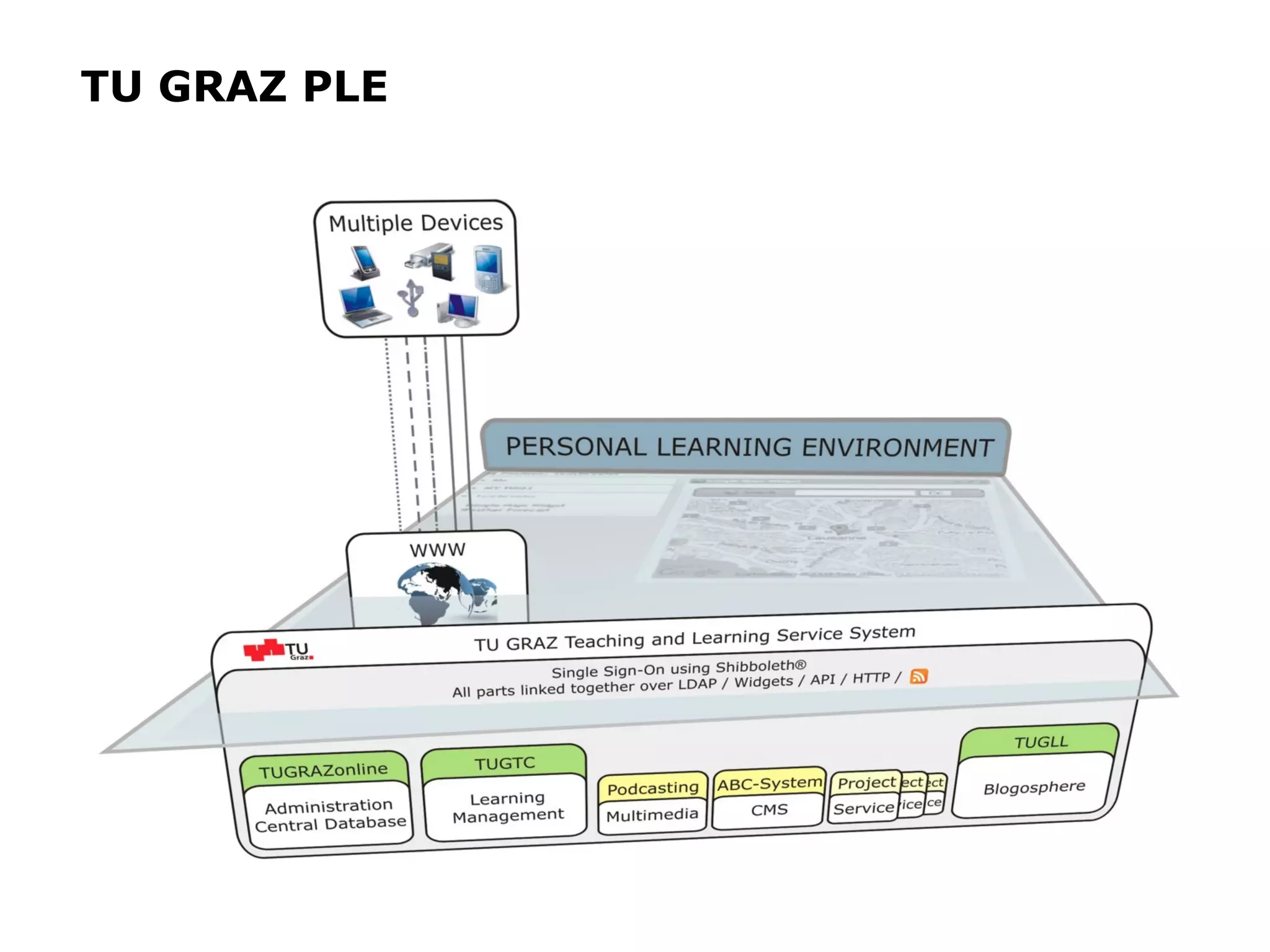



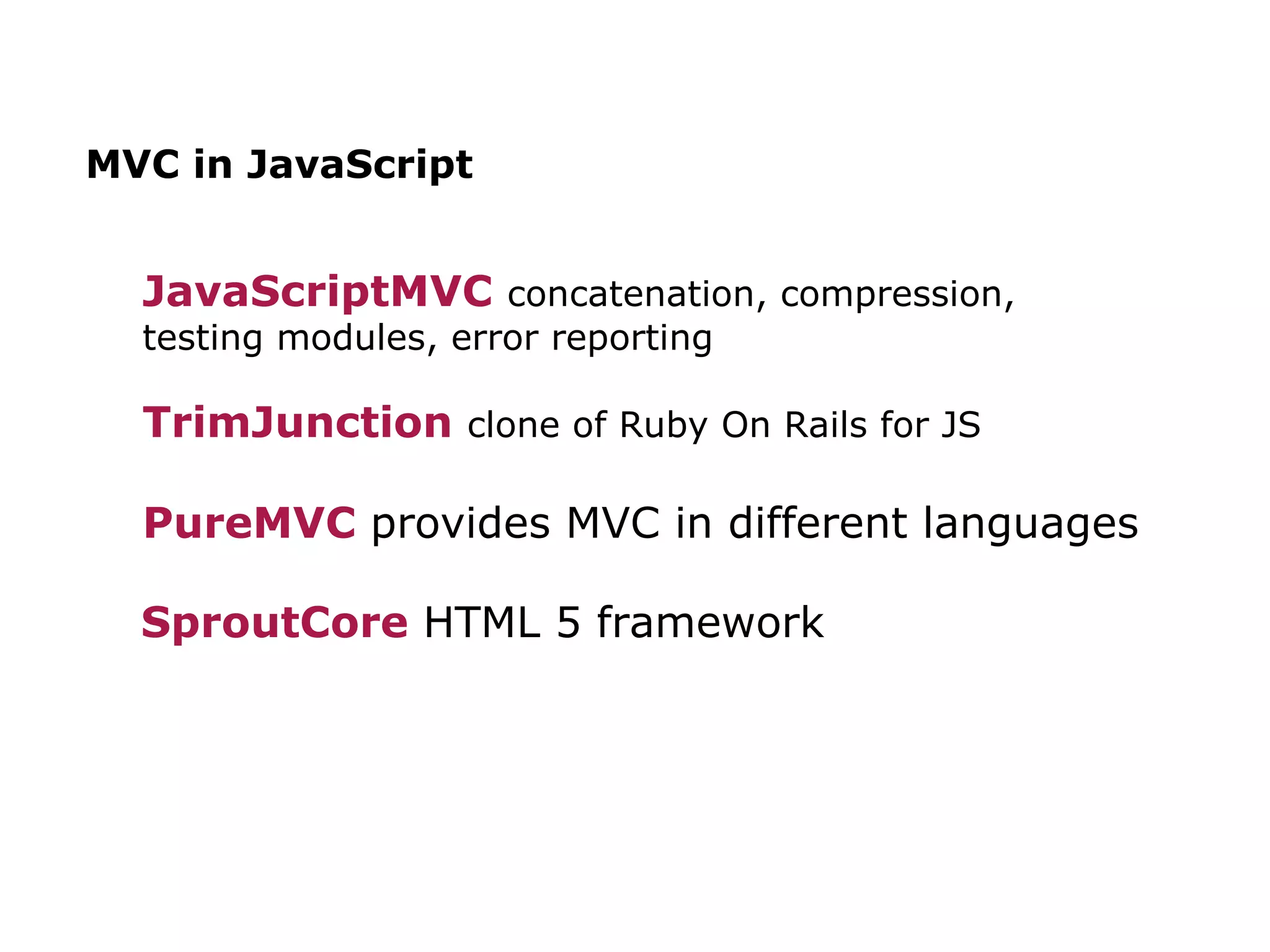


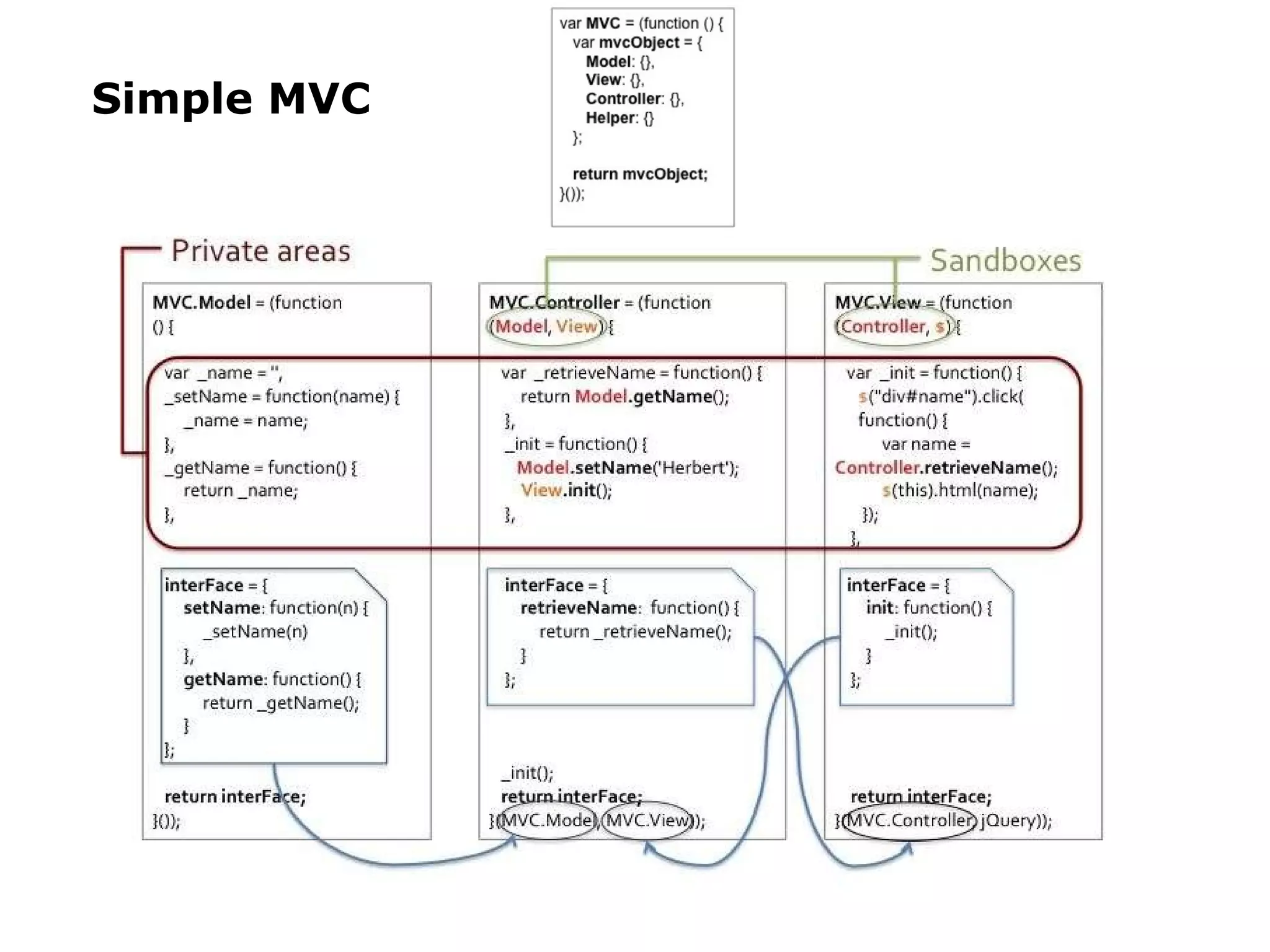
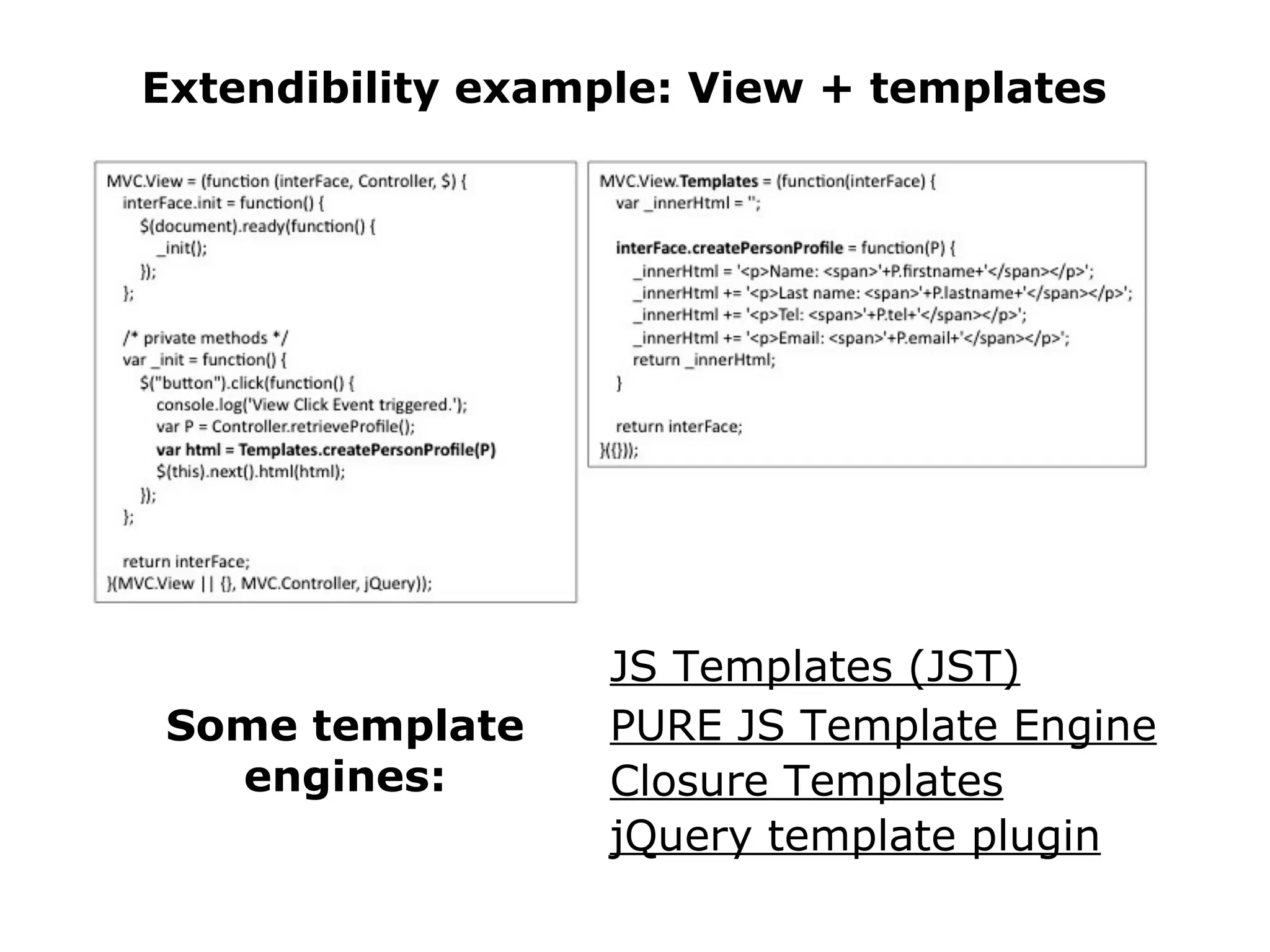
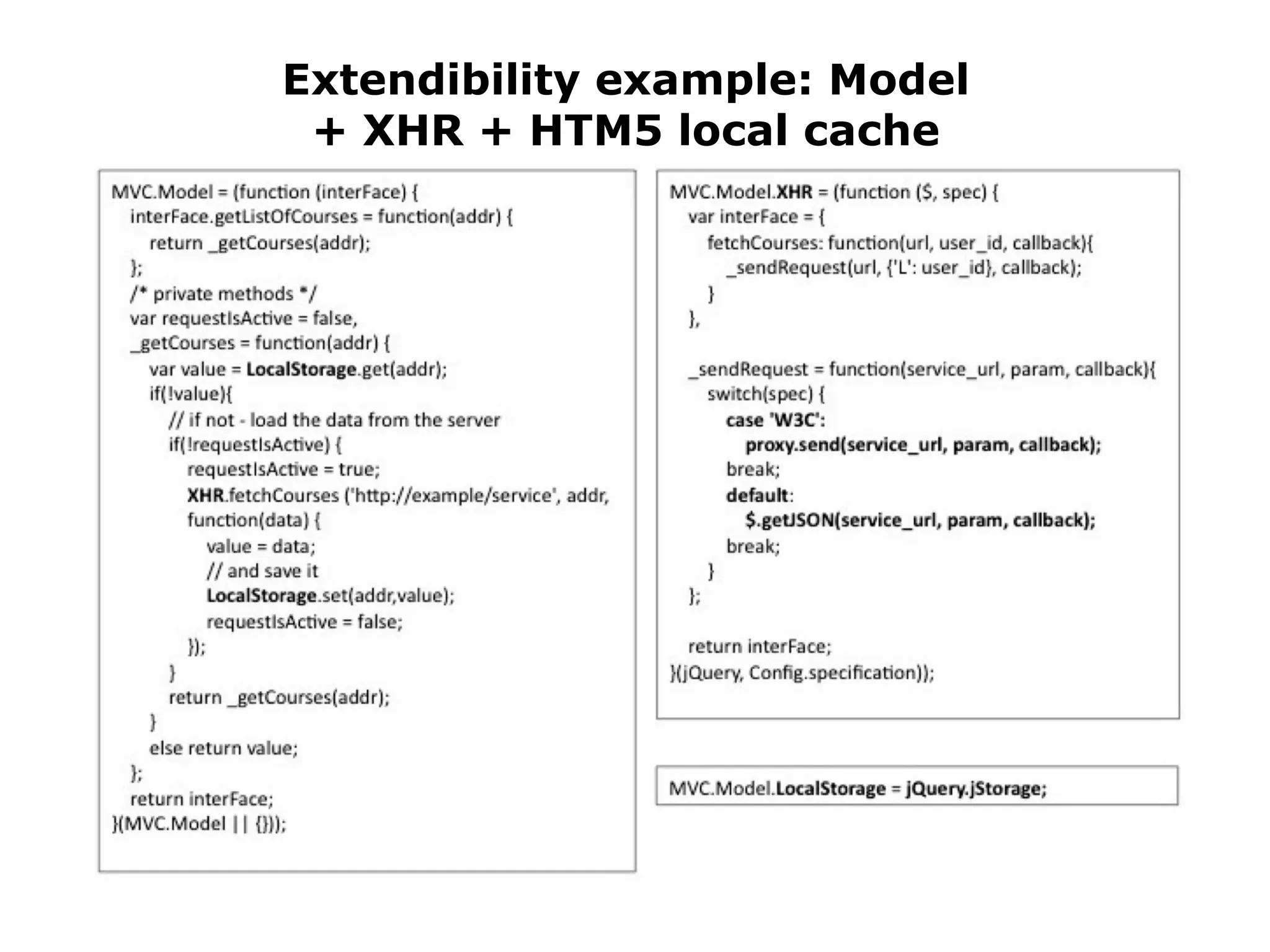
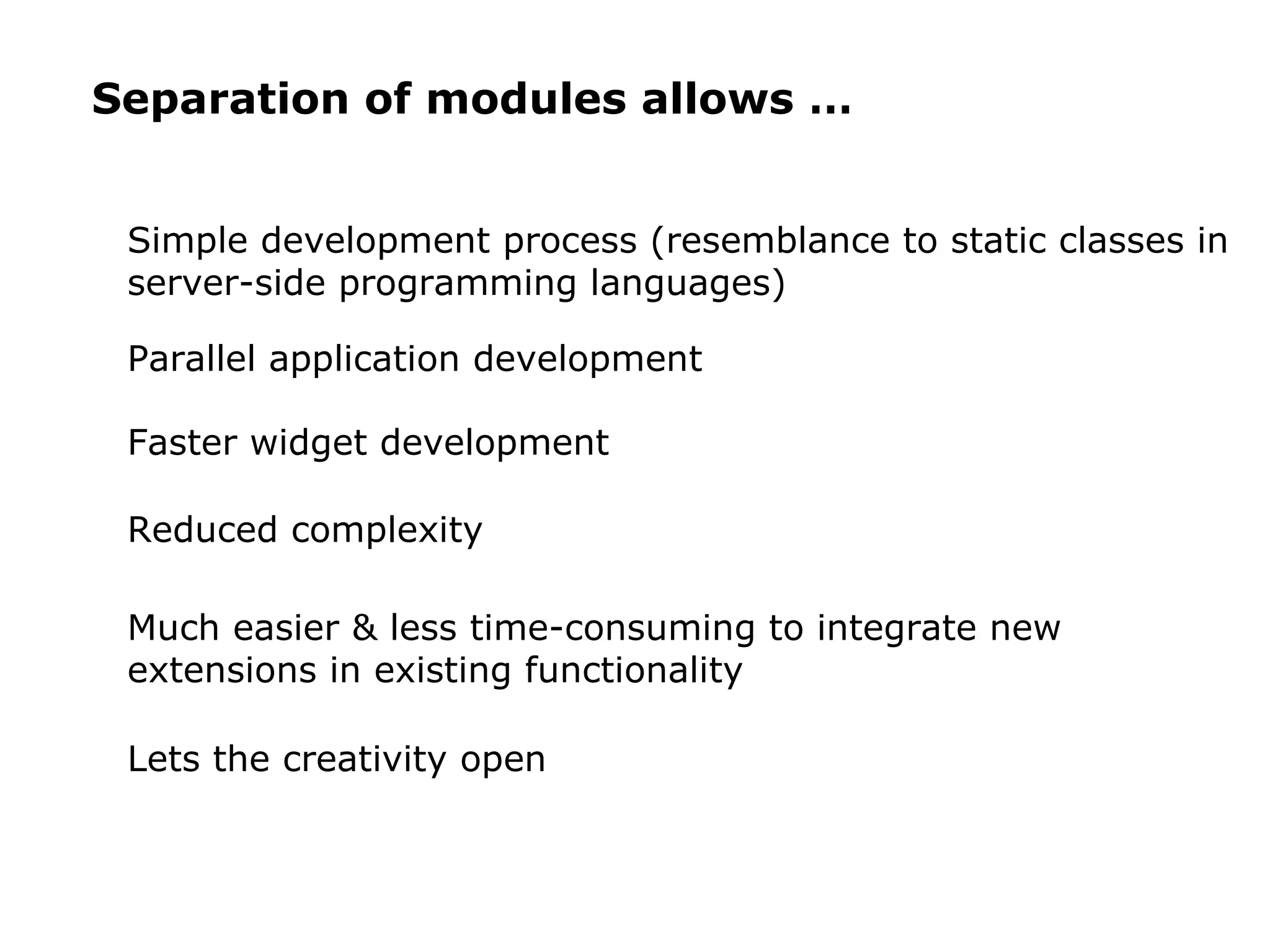


This document discusses a simple MVC framework for developing widgets. The framework aims to reduce complexity and development time for student developers who are familiar with server-side MVC frameworks but new to JavaScript. The framework uses a module pattern and singleton paradigm to implement the MVC architecture in a simple way resembling object-oriented classes. This separation of modules allows for parallel development, easier extensions, and less complex integration of new features.












